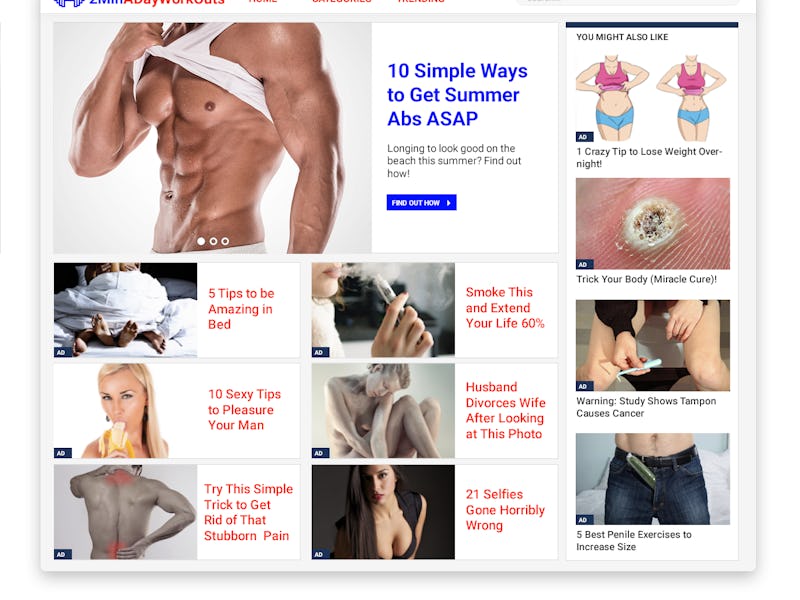On Wednesday, Facebook declared war on ads for killer abs and butt lifts. To be more precise, that means web pages that are “covered in disruptive, shocking or malicious ads” won’t have a shot at appearing as often in your newsfeed.
Facebook’s dinging domains that have more ads than editorial content; often the sort that are programmed with popups or toe-fungus ads. It’s a change that is supposed to improve your experience on Facebook, and decrease the incentives for sites to send out spammy links. The changes started Wednesday and will be fully implemented within a few months.
“Similar to the work we’re already doing to stop misinformation, this update will help reduce the economic incentives of financially-motivated spammers,” Jiun-Ren Lin and Shengbo Guo write in the Facebook blog post announcing the update.
Spammy ads will be identified by a machine learning system that scrolls through the content of the link to look for things like the ratio of ads to content, pop-ups, malicious ads, and the sexually suggestive or shocking images you find on pages that make money on ads. It’s basically anything that’s mostly ads and not content, like this example below:
Links that lead to pages full of things like this, or popups are what Facebook is trying to stop.
In the past, Facebook only looked at headlines in order to determine if a site is just trying to spam you. By upgrading the machine intelligence that goes through links, the quality of the ads you see on Facebook will increase. When links in posts are determined to lead to sites full of ads, the page will show up lower in your news feed and Facebook may make it ineligible to be a paid advertisement.
Facebook provided this example with the following note: "The example attached is only one example of a fictional low-quality web page experience; there are many other signals that we factor in that may not be displayed in this image."
This is pretty similar to how Facebook is attacking the spread of financially motivated fake news posts across the site. The drive there has mostly been to determine if things are posted by fake accounts or using misleading headlines to get people to click into ad-heavy sites, but the idea of using machine learning to analyze and sort different posts is the same.
And instead of just focusing on pages made by advertisers directly, Facebook is also looking at more organic posts to make sure that spammy links are dropped down farther in the news feed. At the end of this process, Facebook is trying to make sure that the links you see on the site are things you trust enough to click on.
